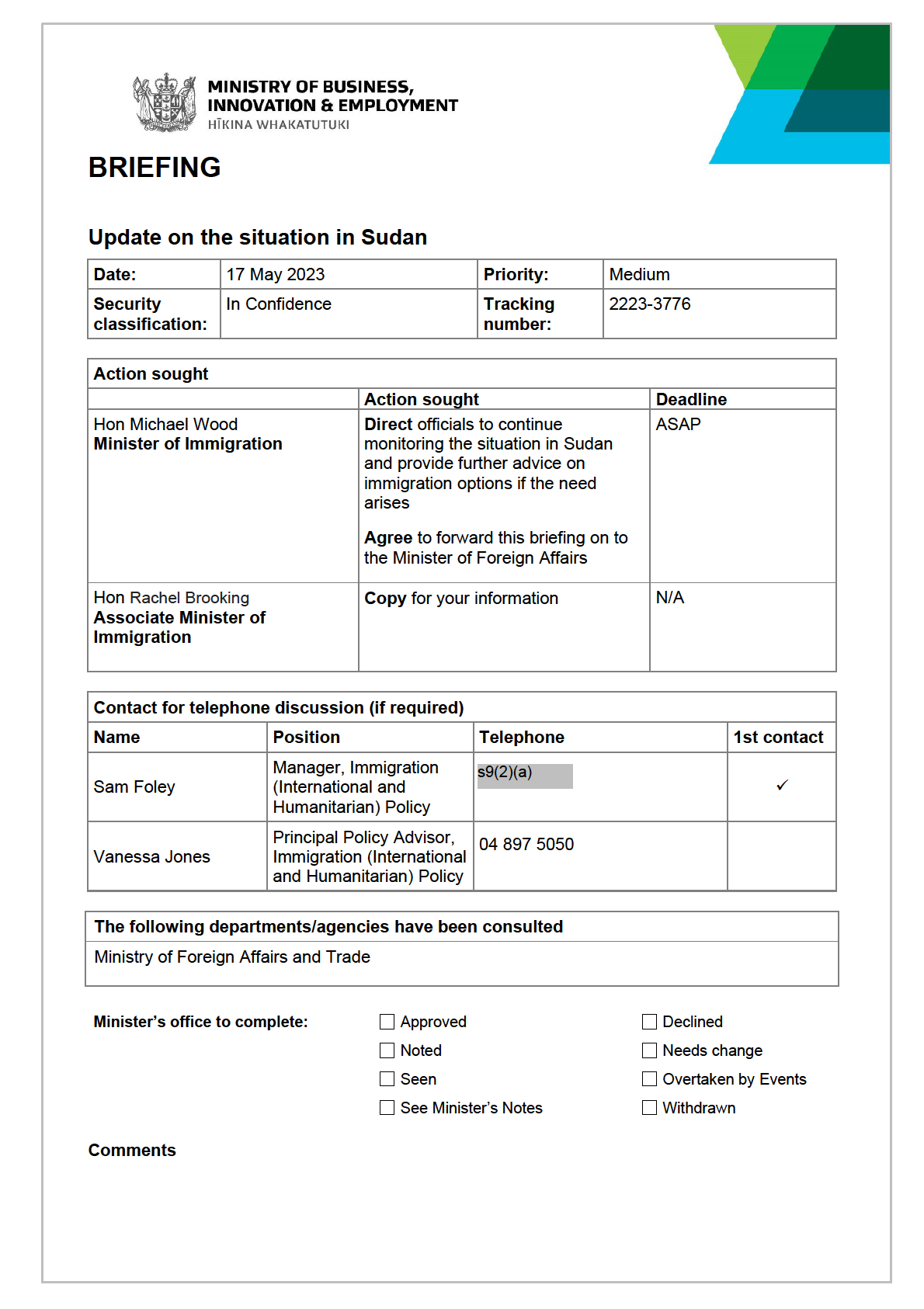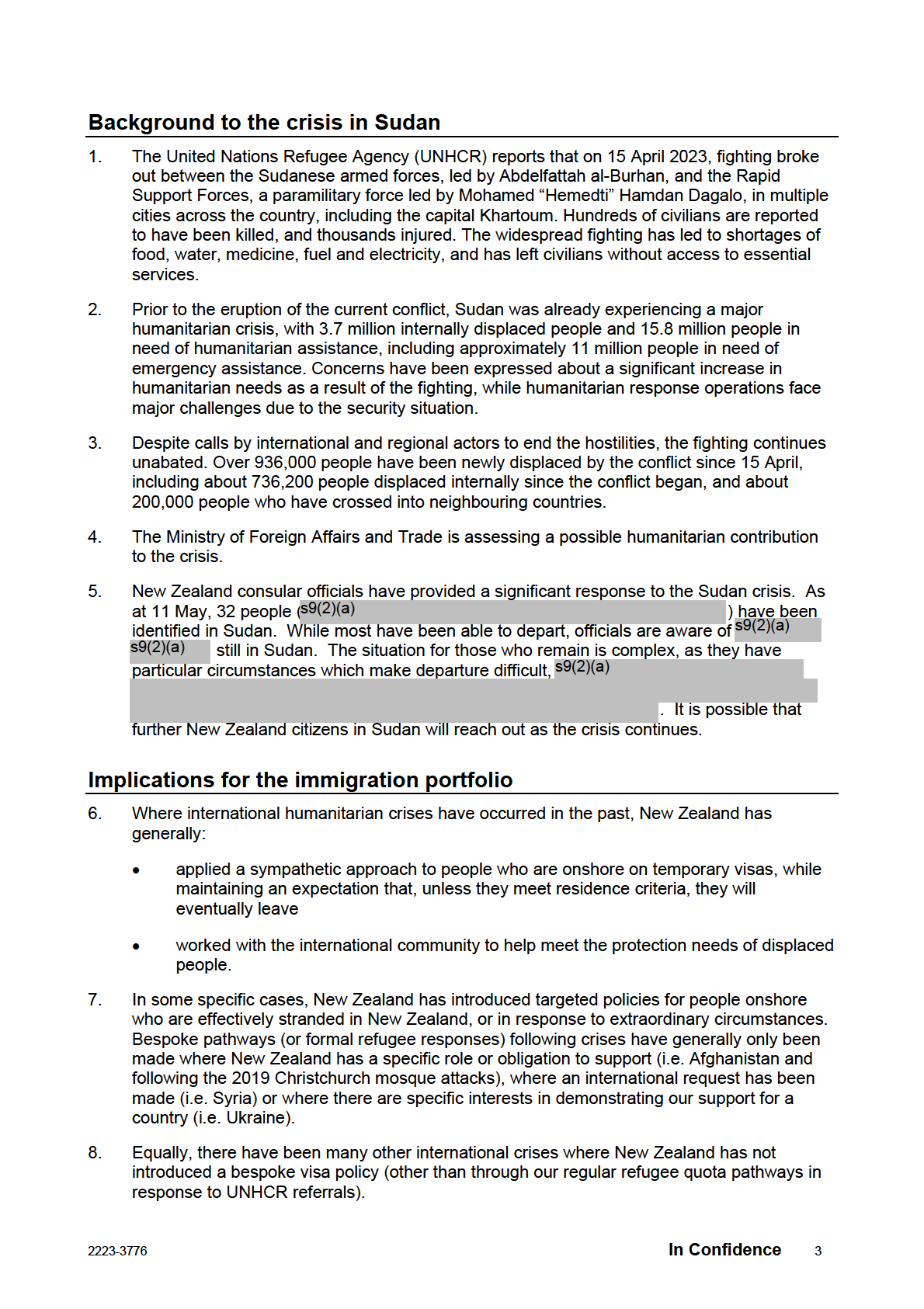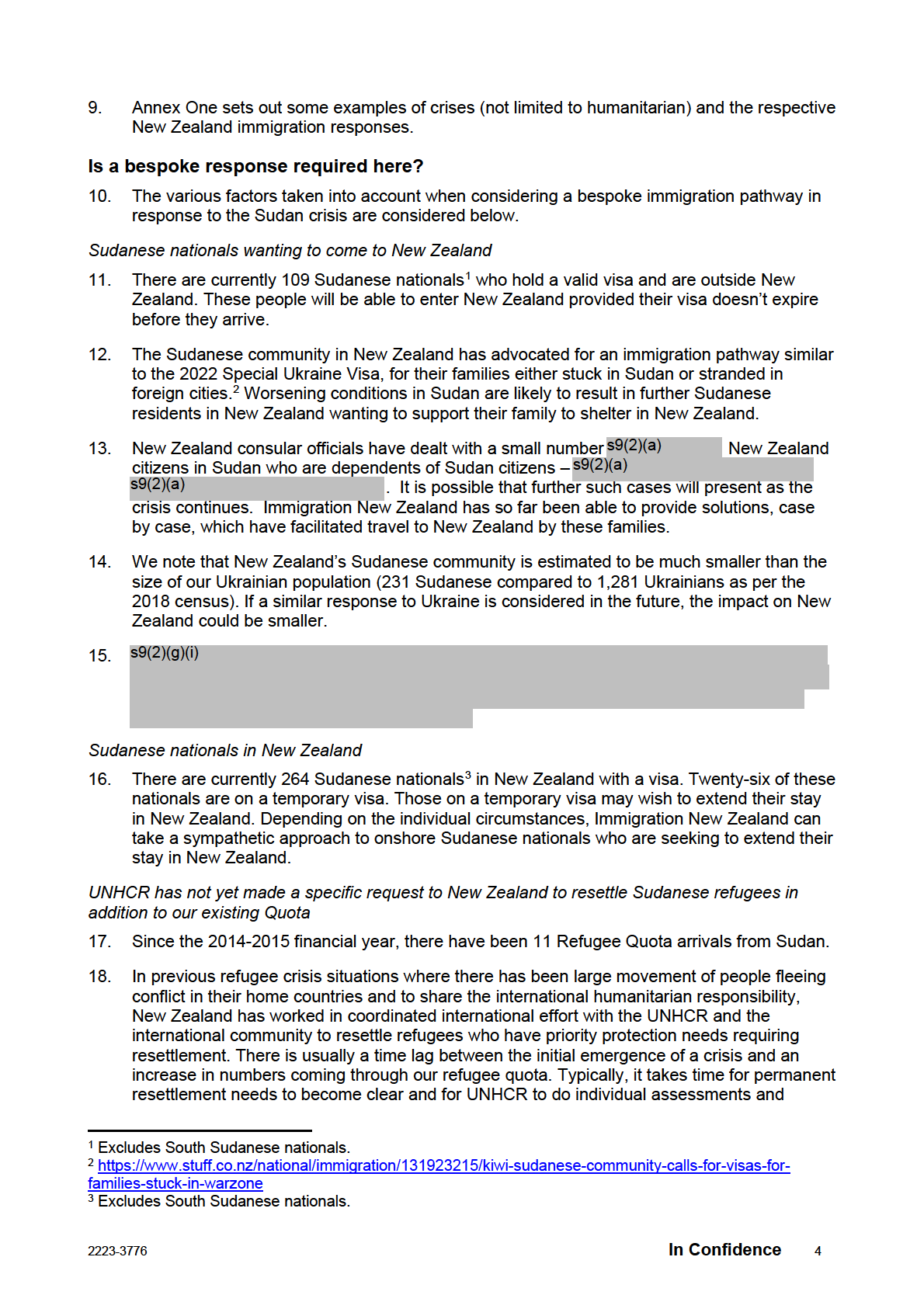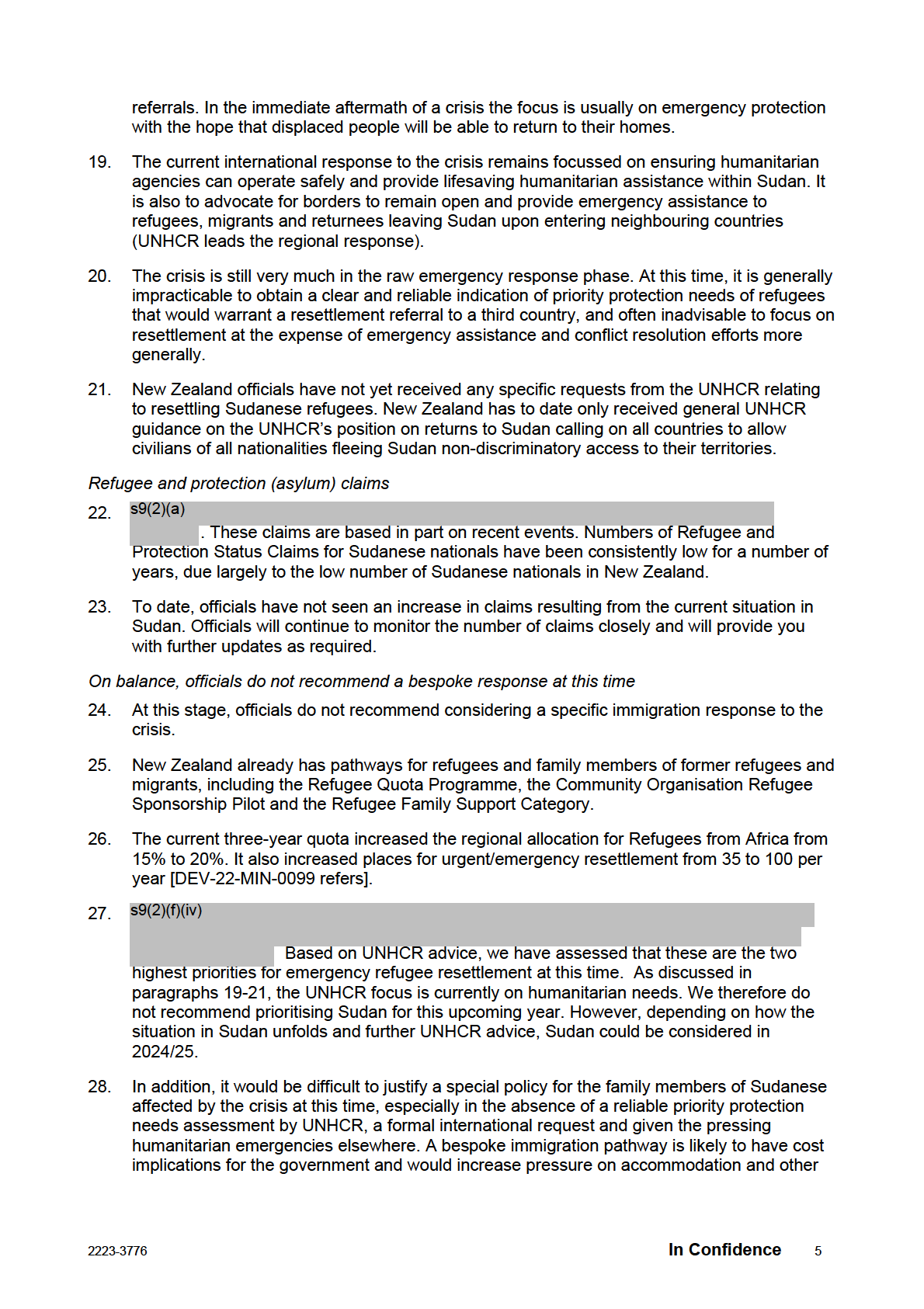
under the
Released
Official Information Act 1982
Comments
under the
Released
Official Information Act 1982
2223-3776
In Confidence
1

under the
Released
Official Information Act 1982

under the
Released
Official Information Act 1982

under the
Released
Official Information Act 1982

under the
Released
Official Information Act 1982
infrastructure. It will also likely lead to increased calls for similar treatment from other groups
in New Zealand with family in other conflict or dangerous areas.
29. It would also raise equity concerns with other groups in New Zealand who face long wait
times for family reunification pathways (i.e. under the Refugee Family Support Category) or
have limited to no access to such pathways. For example, there have been several recent
cases where requests for bespoke pathways for family members have been made, including,
Myanmar, following the earthquake in Turkey/Syria and Afghan interpreters and the wider
Afghan community who requested to bring in further family members as they fear for their
safety. It would also have precedent implications for how the Government responds to future
crises.
30. Finally, New Zealand does not have strong ties to Sudan and our role in responding to
domestic crises in other countries (except where we have an explicit role such as in the case
of Afghanistan) is typically less clear than for international crises involving one sovereign
state invading another.
Next steps
31. Of icials wil continue to monitor the ongoing situation in Sudan. If the situation escalates
significantly or New Zealand receives an UNHCR request, further advice will be provided to
consider whether immigration options are required. Any further work on this issue wil have
resourcing implications for the immigration work programme.
Annexes
Annex One: Examples of crises and New Zealand’s immigration responses
under the
Released
Official Information Act 1982
2223-3776
In Confidence
6
Annex One: Examples New Zealand’s immigration response to previous
crises
•
Ukraine: The 2022 Special Ukraine Visa is a two-year temporary visa for Ukrainians with
family in New Zealand. It was a response to the unprecedented Russian invasion of Ukraine.
•
Tongan volcano: staff were reminded of their ability to exercise compassionate discretion
(such as granting new visas, waiving fees) with regard to people on temporary entry class
visas who could not return home.
•
Afghanistan: New Zealand has provided protection, through the grant of residence under a
bespoke policy, to over 1,400 people. This is based on their having a real risk of persecution
because of their linkages to the New Zealand Defence Force or New Zealand Aid
Programme. New Zealand organised and paid for their visas and travel and provided
enhanced welfare support on arrival. This was a unique policy that reflected that New
Zealand had a special obligation to assist this cohort.
•
The Mosque Terror At acks: New Zealand offered residence to victims and witnesses, and
introduced a special limited residence programme to family members from offshore.
Immigration charges were waived. Access was limited (one family member and their
immediate family per sponsor) and around 200 visas were granted.
•
Hong Kong: while New Zealand extended the temporary visas of people onshore, this
occurred through the COVID-19 measures rather than through a deliberate policy.
•
Myanmar: MFAT scholarship students in New Zealand had their temporary visas extended
and are being supported by MFAT.
under the
•
Syria: in response to a UNHCR request, New Zealand in 2016 agreed to take 750 Syrian
refugees, 150 through repurposing existing Refugee Quota places and 600 (over three
years) in addition to the then-Quota levels (750 per year). New Zealand covers al costs
(visas, travel, support on arrival) for Quota refugees.
•
Zimbabwe: New Zealand granted residence through a special policy to around 1,000
Zimbabwe citizens who had come to New Zealand between 2000 and 2004, following civil
insurrection and while their passport was visa waiver for travel here.
•
Kosovo: in response to a UNHCR request, New Zealand in 1999 offered refuge to around
600 Kosovars with family linkages to New Zealand (the New Zealand Albanian community
Released
prepared the list of names). It was expected that many would wish to go home following the
cessation of the conflict, so the funding voted (which covered visas, travel and support on
arrival) included a one-way airfare (which many took up).
•
Timor Leste: in 1998, the UNHCR requested countries to be prepared to provide temporary
protection for evacuees from Timor Leste. New Zealand agreed to take 200 people but in the
end this was not required.
Official Information Act 1982
•
Tiananmen Square: in the early 1990s New Zealand granted residence to Chinese nationals
who were onshore following the Tiananmen Square massacre.
2223-3776
In Confidence
7




